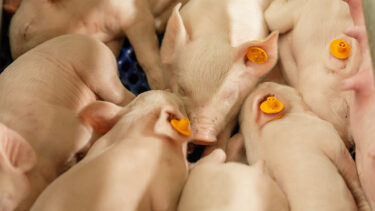Spray dried porcine plasma, imperative for piglet performance and health. Or not?
Growing global awareness in regards to antimicrobial use in piglets is not only a huge opportunity for new innovative ingredients but as well as for certainties in life, such as spray dried porcine plasma or SDPP. Being on the market for longtime, SDPP regains interest after being put aside as a feed ingredient after the BSE (Bovine Spongiform Encephalopathy) crisis in the 1990s, hitting the livestock (ruminant) farming industry severely. Is this continuous hint of mistrust still relevant?
benefits and downsides
When looking at contemporary priorities it’s a hard balance. On the one hand, sustainability and circularity are taking the overhand but at the same time zoonoses and disease prevention in livestock and humans have being put highly on today’s agenda.
SDPP will probably be one of the lead examples of ingredients with at the same time excellent nutritional value and optimal circularity. It offers highly digestible protein with a perfect amino acid profile. When properly treated it is an excellent source of immunoglobulins and other biologically active components improving health by reducing intestinal permeability and modulating immune response. On top SDPP is highly palatable, an important asset to piglet performance and health. These 3 main properties fit excellent in early life development and disease control and antimicrobial reduction.
However, it’s not all roses: primarily the stringent legislation to the use of SDPP: feed mills using SDPP can only produce non-ruminant feed, transport of feed may not be combined with feed for ruminants and the use should be clearly mentioned on the label and cannot be used on mixed farms. All these factors combined limit the freedom to operate. Secondly the mistrust in regards to disease transmission rebooted some years ago. Funded or not, when PEDv (Porcine Epidemic Diarrhea virus) popped up some years ago and nowadays ASF (African Swine Fever) hitting the swine industry very hard, SDPP is a sitting duck. Thirdly, effective dosages of SDPP is a cost driver in formulation and finally the renowned ‘plasma dip’ after weaning can be observed. When ceasing the use of plasma, feed intake of piglets drops, often losing their head start and ending at the same end weight as non-SDPP fed piglets.
With or without?
Mistrust towards SDPP is certainly not needed, but nutritionists must try to strike a balance between the pro’s and con’s when looking at their specific situation. Replacing SDPP in piglet diets and obtaining the same piglet performance will however require a specific approach. Recent practical research indicates that optimally preparing the young piglet for post-weaning health and performance is possible and affordable without using spray dried porcine plasma.
Ezt a kapcsolatot az Ön által böngészett hely alapján javasoltuk. Természetesen más elérhetőségeinket és helyszíneinket is megtekintheti itt.

